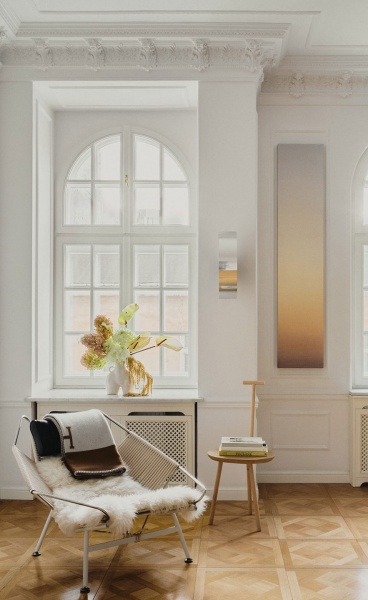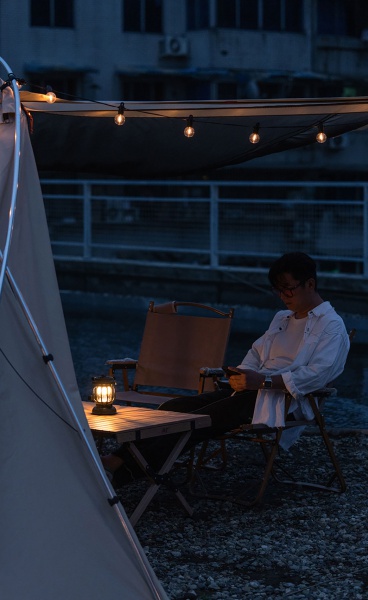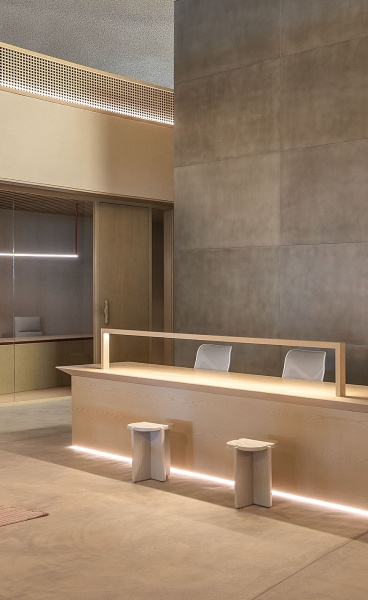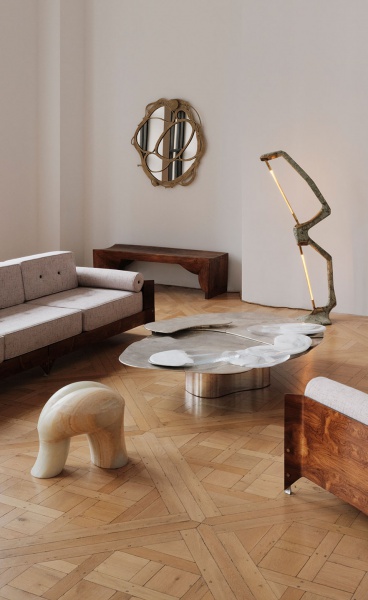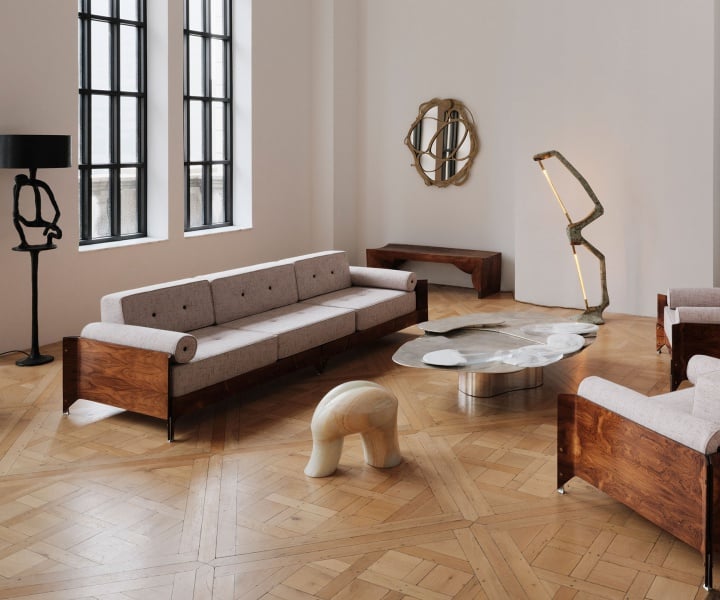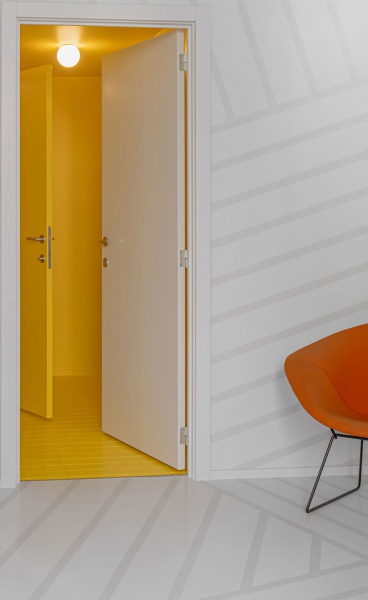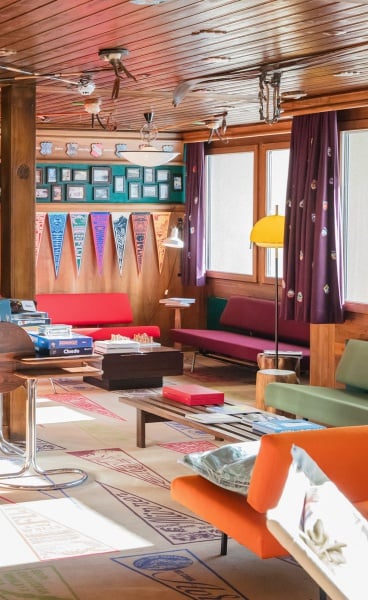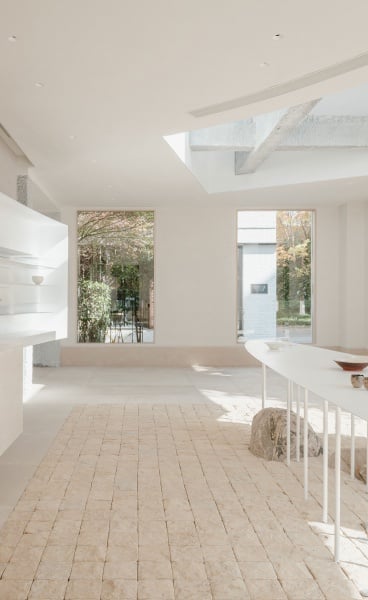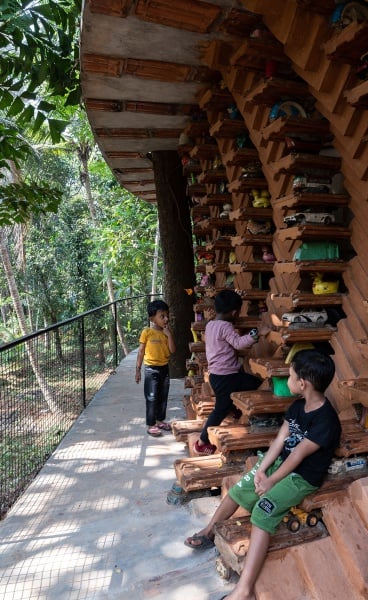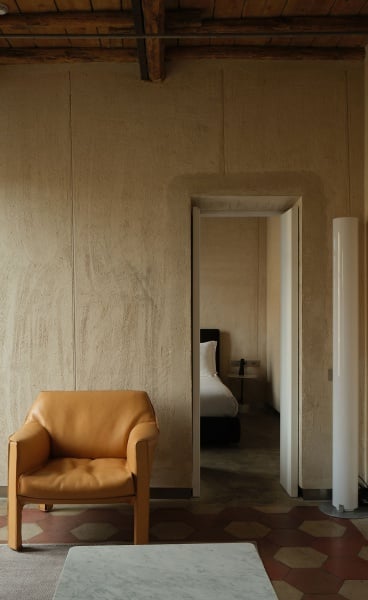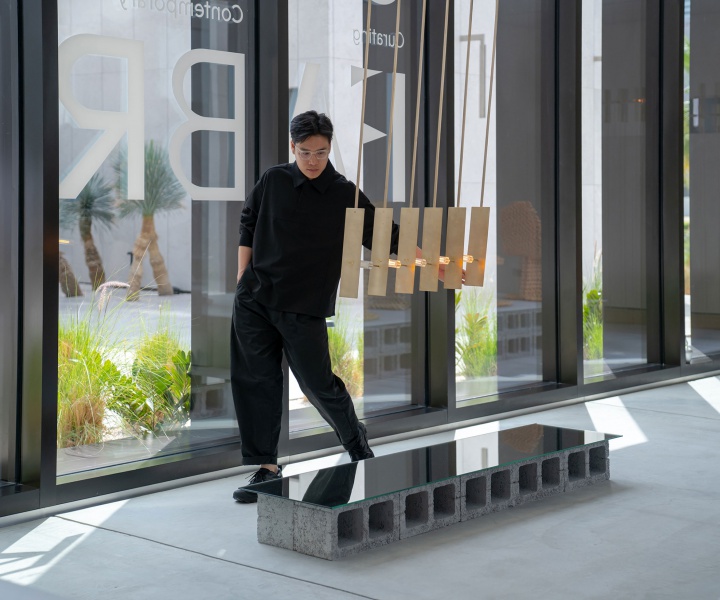| Detailed Information | |||||
|---|---|---|---|---|---|
| Project Name | Bondi Green | Posted in | Design, Interior Design | Interior Designer | Run for the Hills |
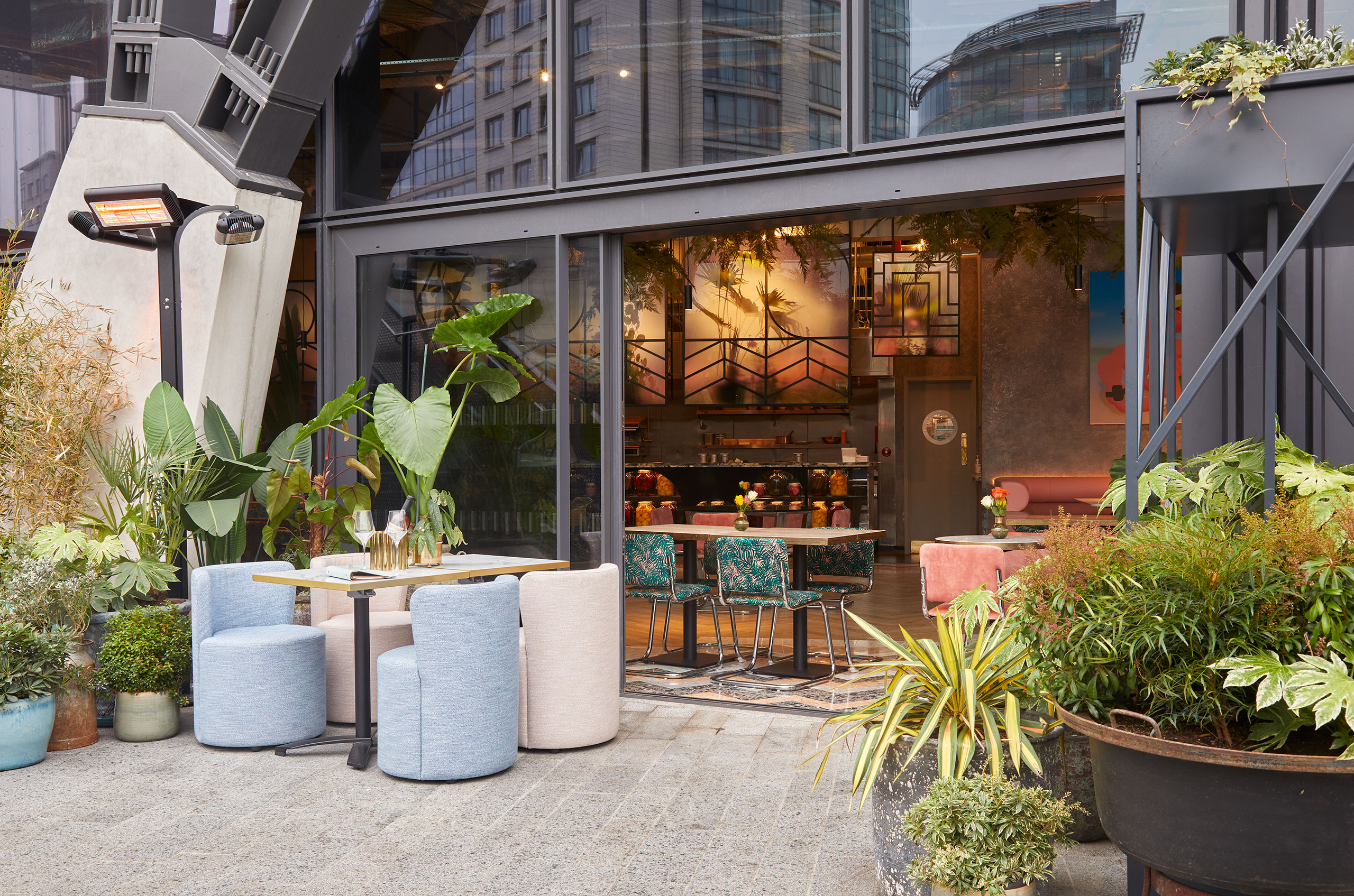
Photography by Katya De Grundwald.
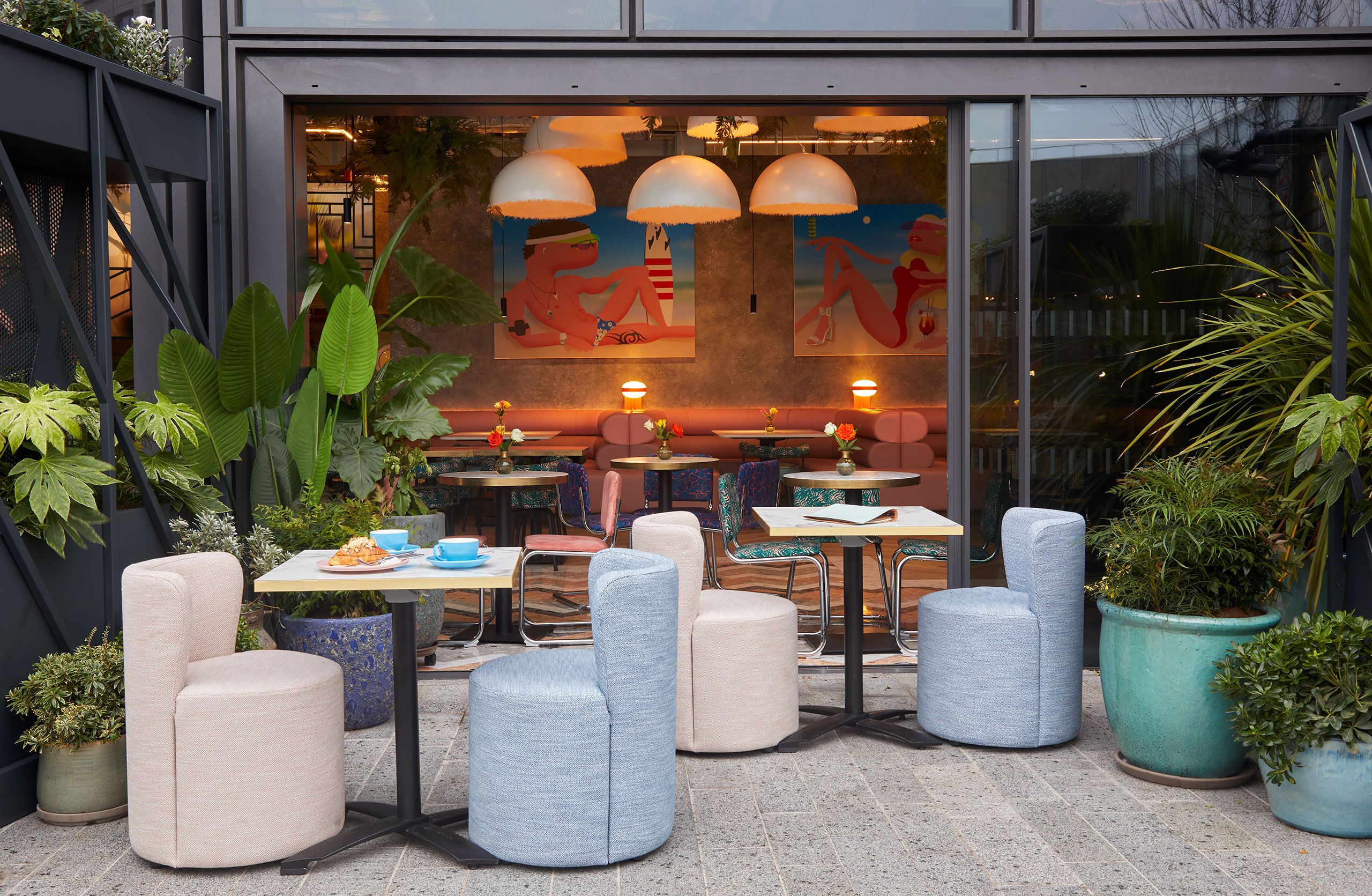
Photography by Katya De Grundwald.
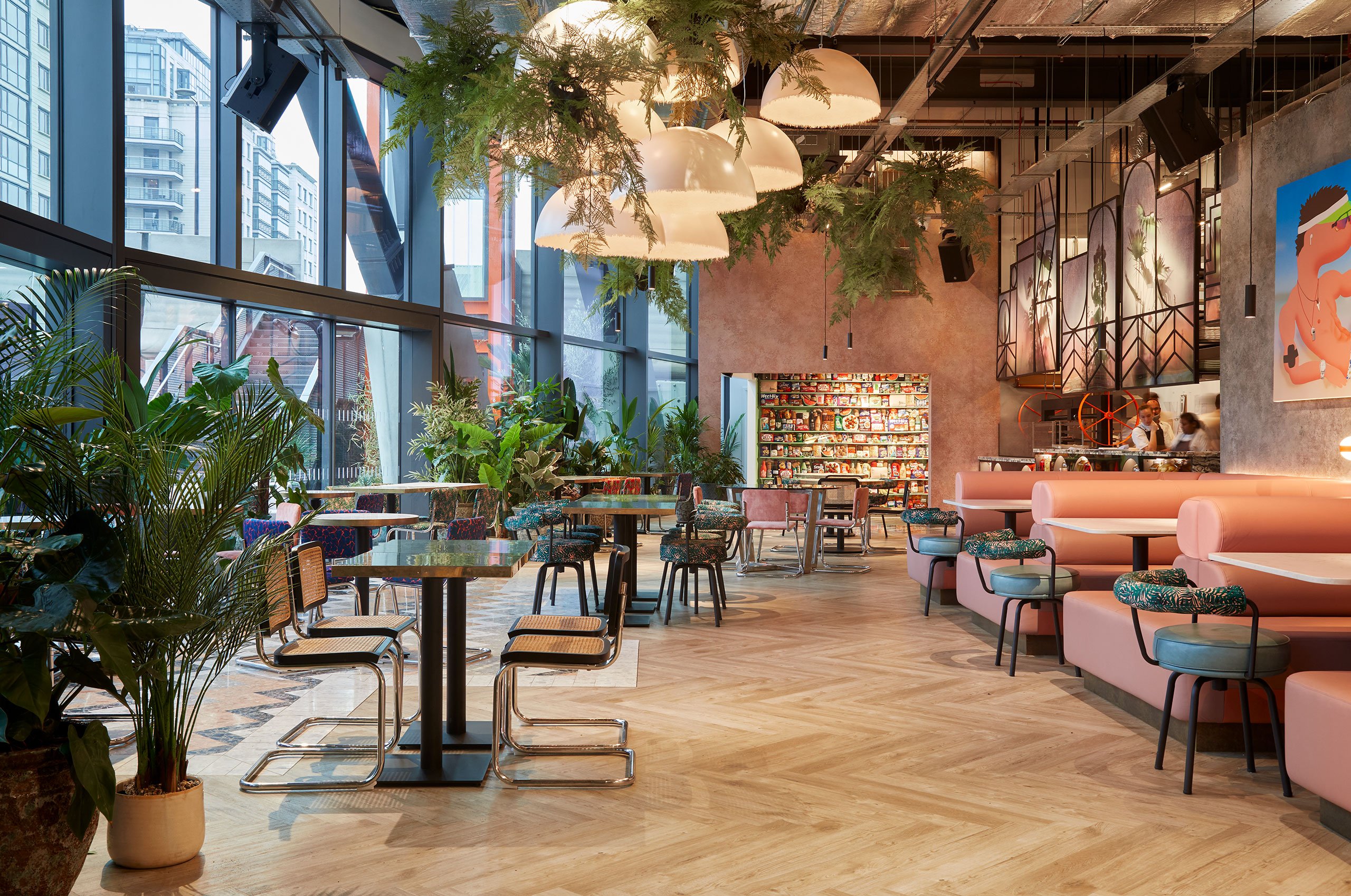
Photography by Katya De Grundwald.
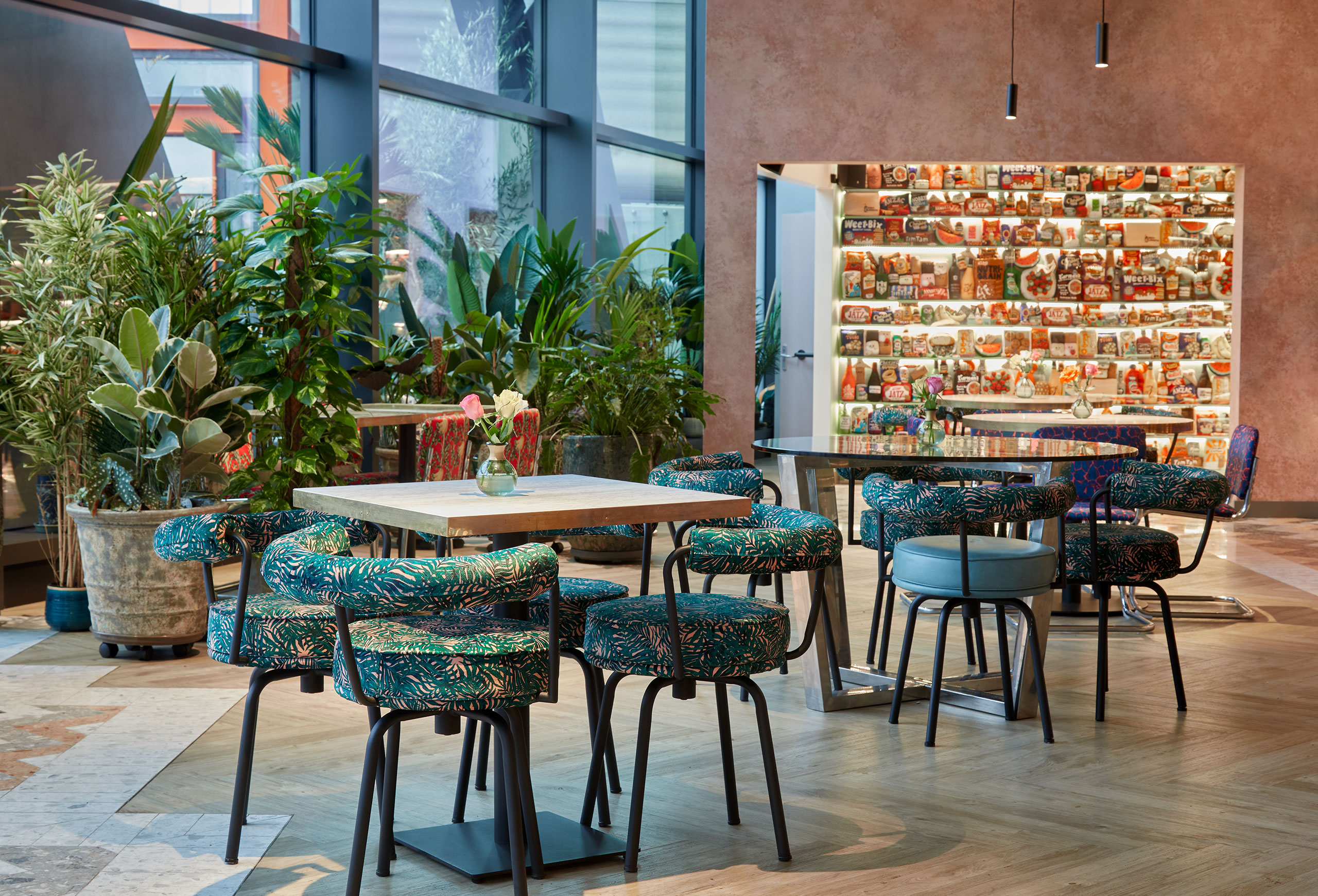
Photography by Katya De Grundwald.
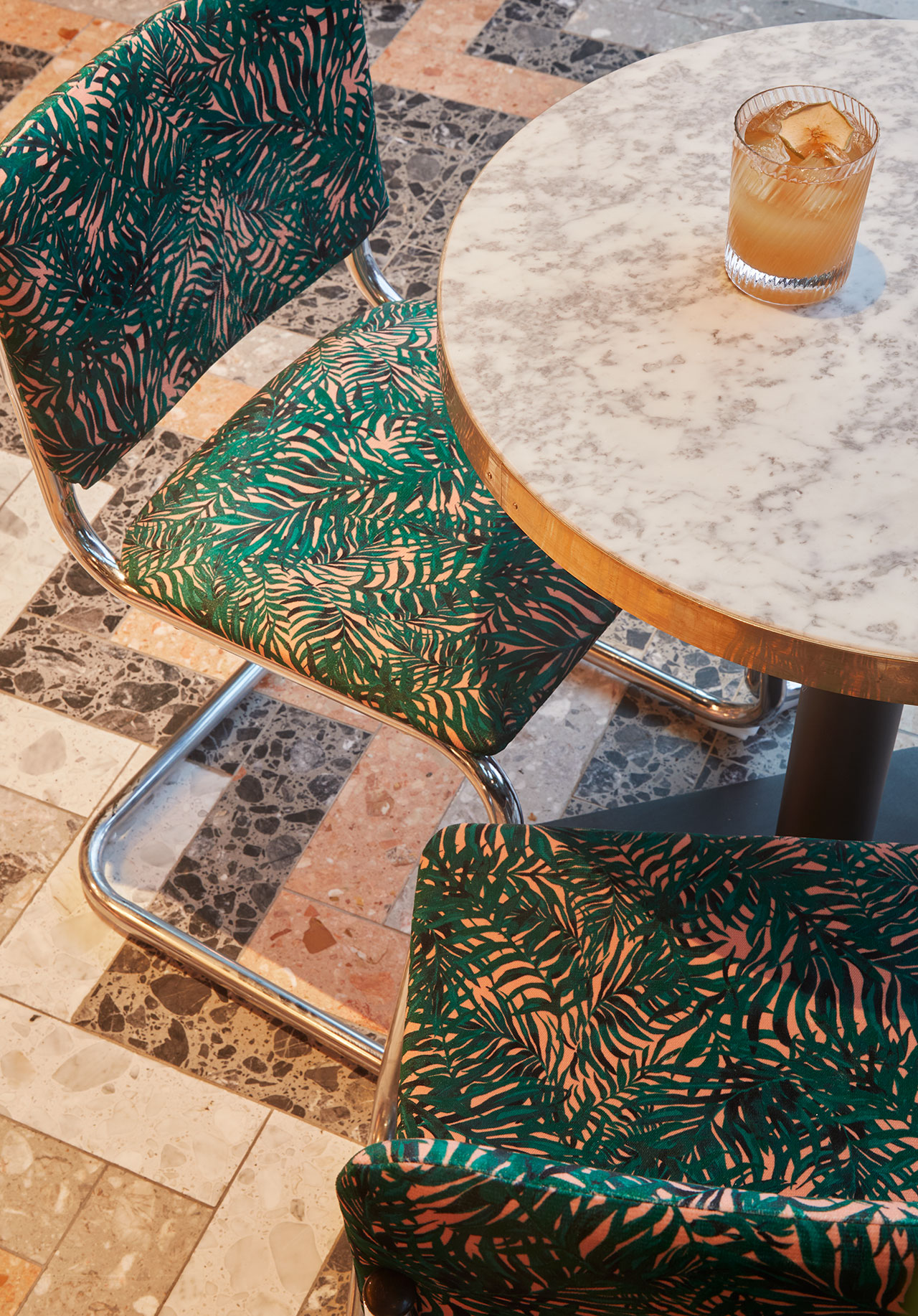
Photography by Katya De Grundwald.
Having to work with a very tall and expansive space fronted by floor-to-ceiling steel-frame windows, the designers embraced a loft-like sensibility leaving most of the raw concrete building structure, air ducts and suspended cable trays exposed. Balancing off the pared-down, industrial backdrop, a palette of pinks, corals, pale mints, teal greens and dusky blues is combined with a mix of patterned and plain velvets, softly textured wools and leathers. Round and square-topped tables in smoke-tinted glass or marble lined in antique brass add touches of glamour, while custom-designed furnishings like the oversized, two-tone curved leather booths, which are cleverly paired with English artist Oli Epp’s large, colourful canvases, inject Art Deco fabulousness.
Most impressive of all the venue’s bespoke furnishings, the monumental bar counter which Run For The Hills designed is a sleek sculptural volume consisting of a fluted concrete base and a seaweed-hued marble counter-top with a luxurious double bullnose edge. Running the length of the space, it accommodates two cocktail stations, a wine tasting zone, and a tank beer spot section, the latter featuring two impressive built-in pressurised Duotanks behind which loom metallic gold decorative patterns, the work of scenic artist Tabby Riley. Next to the beer tanks, a series of arches serve as bottle displays enhancing the bar’s Art Deco-inspired glamour, as well as offer glimpses of the pizza oven on the back, while blackened steel swivel stools upholstered in clashing fabrics hand-illustrated by textile designer Charlotte Jade with botanical and animal prints add to the interior’s eclectic charm.
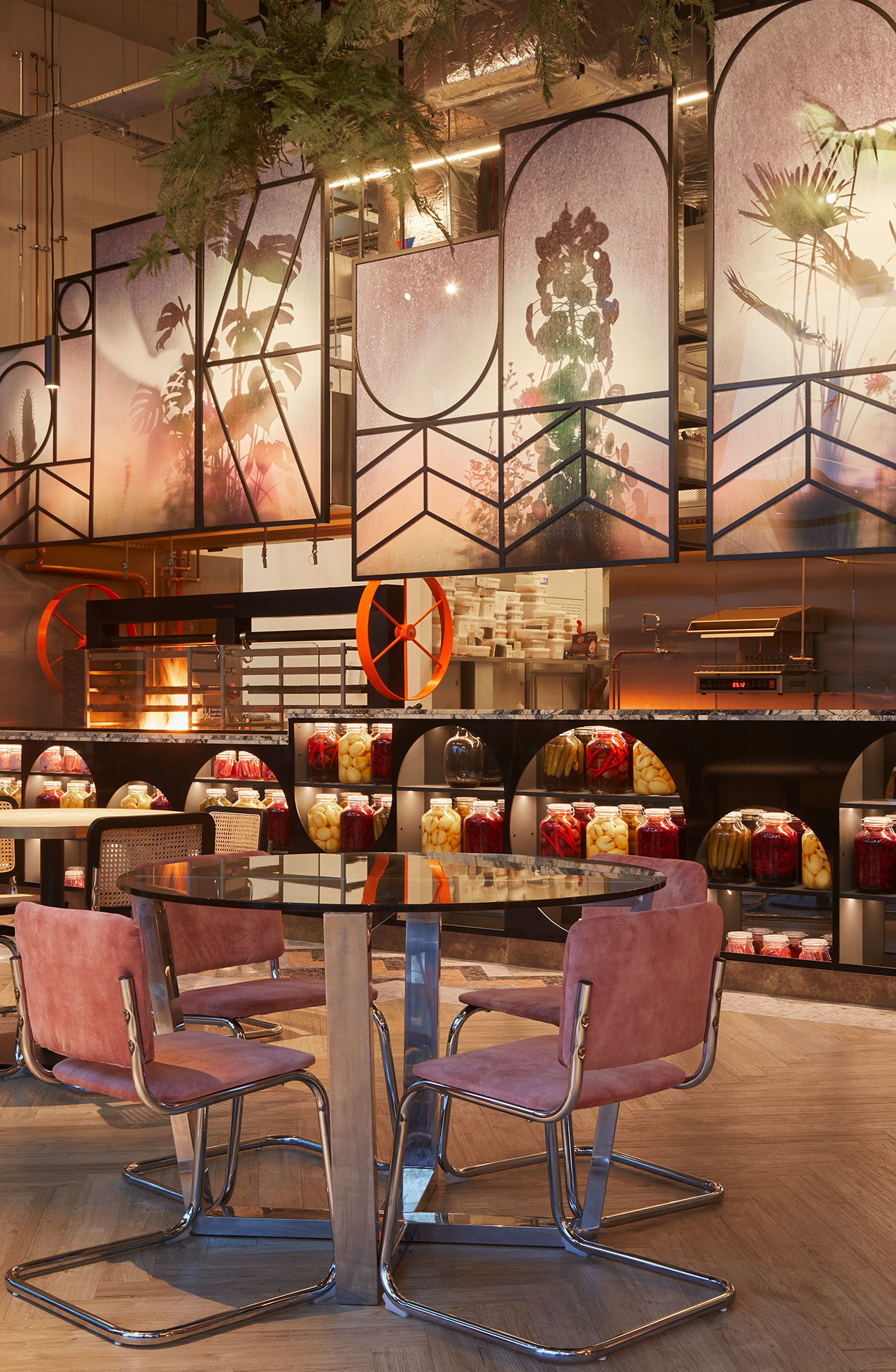
Photography by Katya De Grundwald.
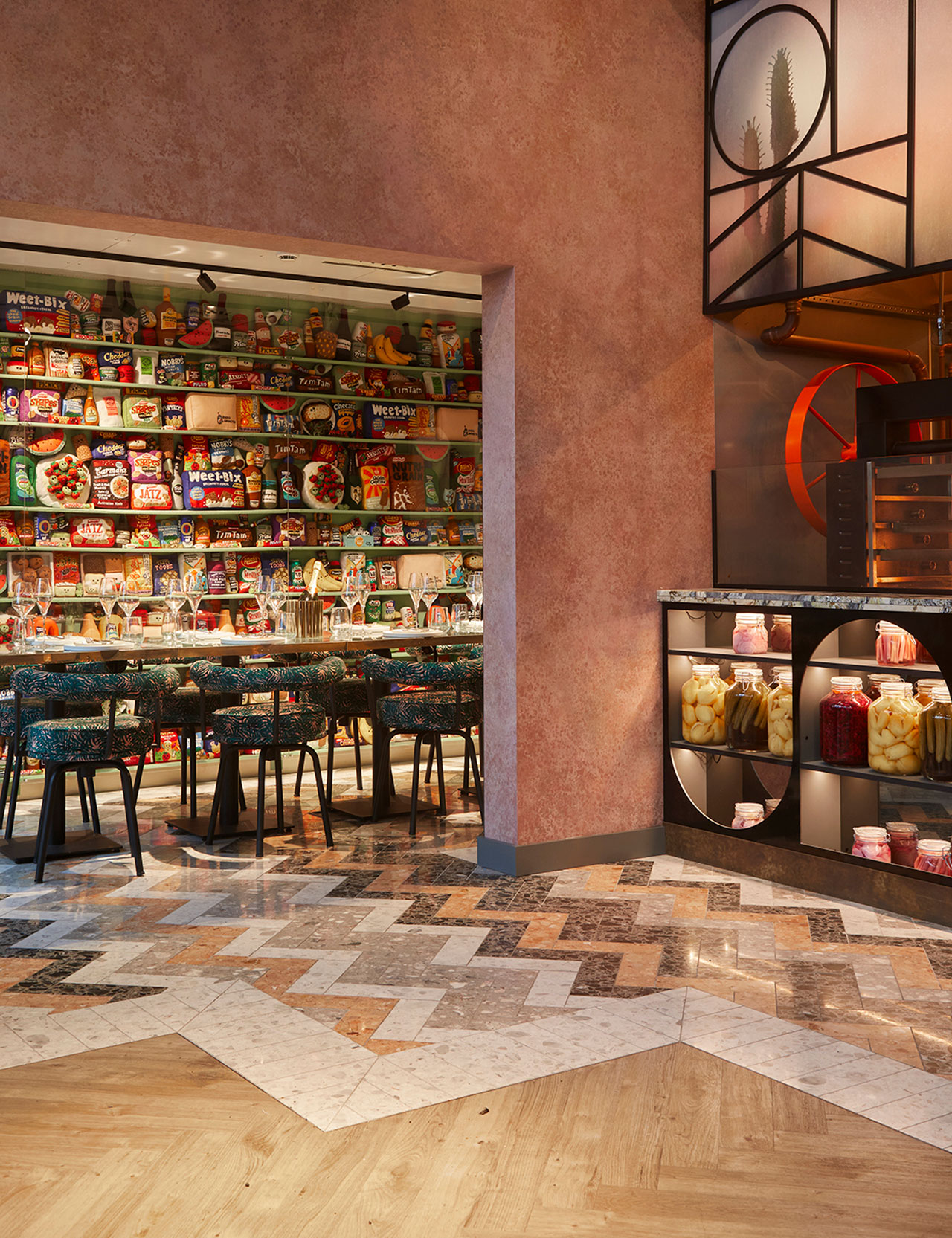
Photography by Katya De Grundwald.
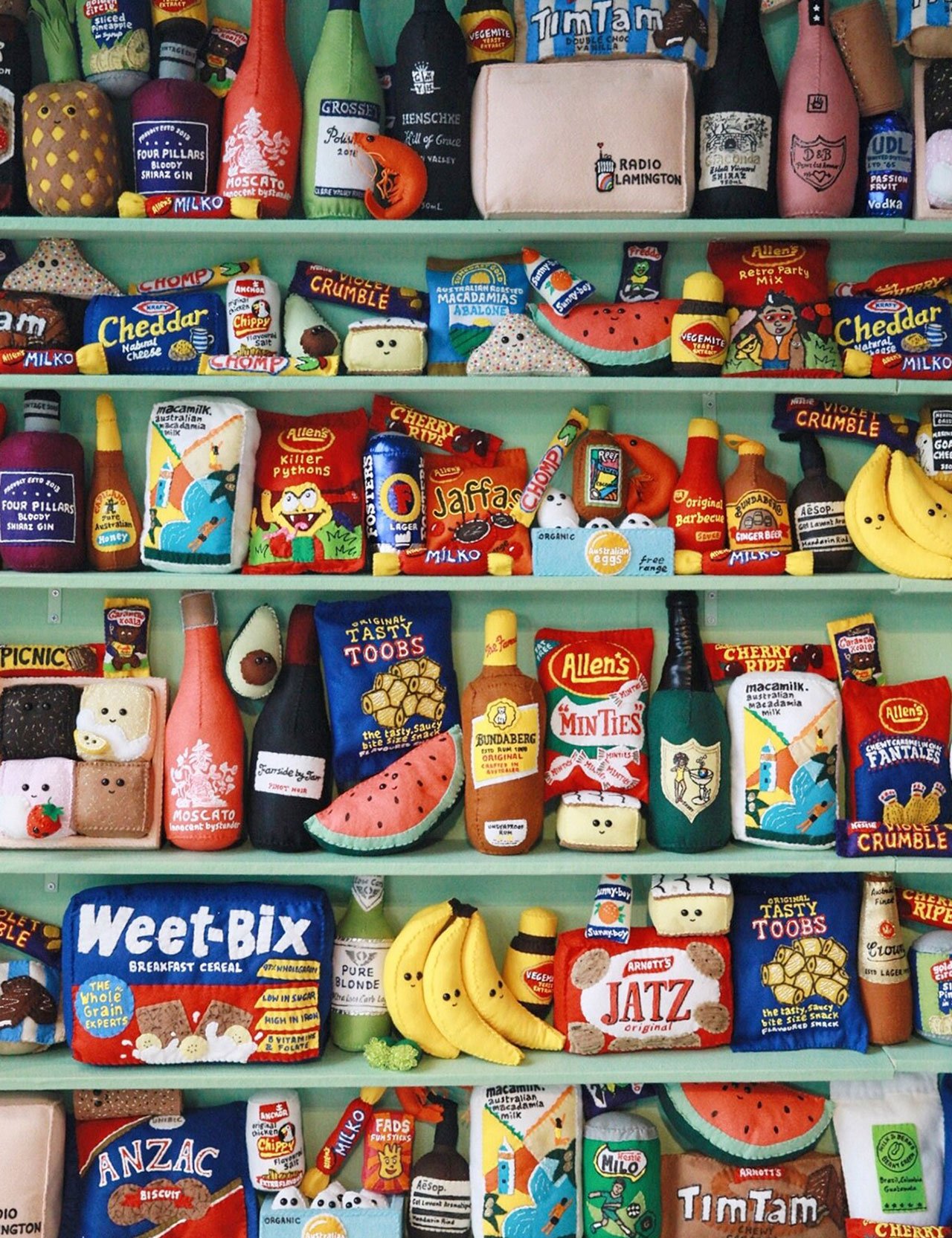
"Australian supermarket" installation by Lucy Sparrow. Photography by Katya De Grundwald.
The massive bar is flanked by something even more spectacular, four giant daisies gently opening and closing as they hover above diners. Titled BLOOM, the seven-by-three-metre-long installation is an inflatable kinetic sculpture by British artist Ant Hamlyn, specially created for the project, symbolising the perpetual birth of a new day, not to mention a nod to the chain’s name. Other art commissions include Lucy Sparrow’s 'Australian supermarket’, a large colourful display in the restaurant’s private dining area packed with Aussie classics like Anzac biscuits and Tasty Toobs hand-stitched out of felt, Justin Hibbs’ series of glazed metal-framed panels featuring botanical motifs located above the open kitchen counter displaying jars filled with house-made pickles and ferments, and Rosalind Davis’ tropical garden installation which extends throughout the venue and outside alongside the canal. Jam-packed with plants, artworks and bespoke furnishings, Bondi Green nevertheless doesn’t feel cluttered or garish, on the contrary, its laidback ambience and playful elegance is a credit to the designers’ keen eye for balance, colour and materials.
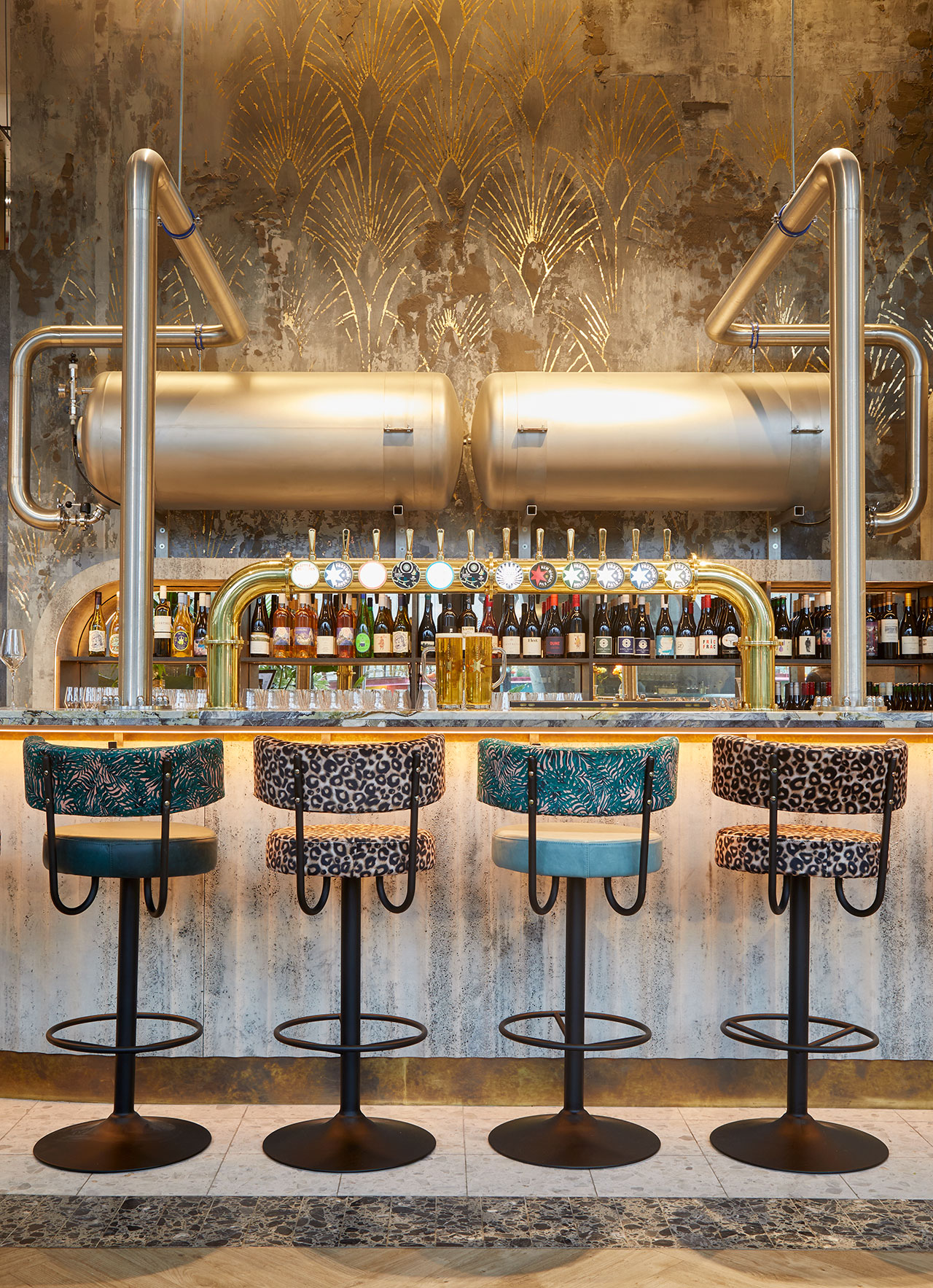
Photography by Katya De Grundwald.
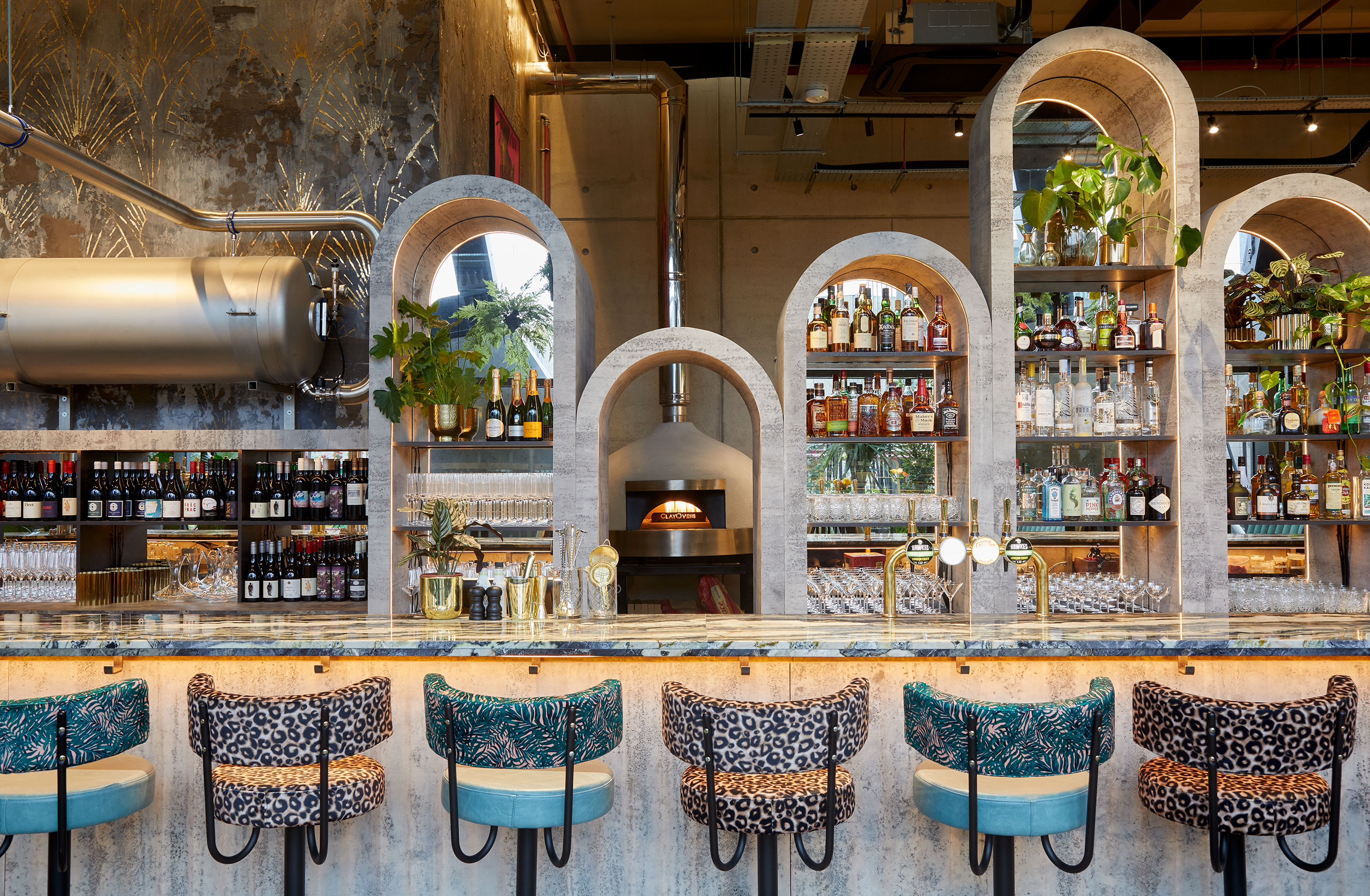
Photography by Katya De Grundwald.
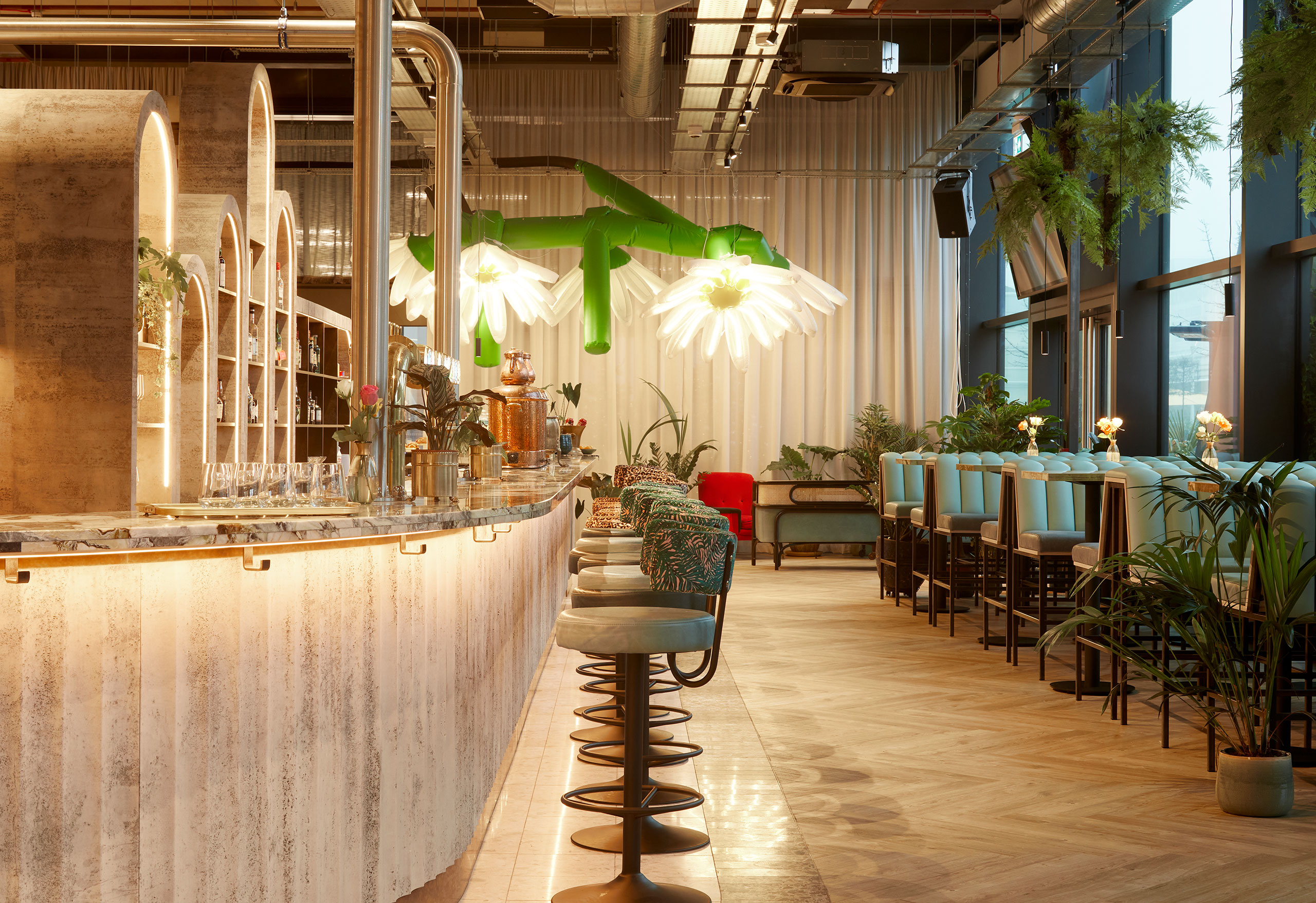
Photography by Katya De Grundwald.
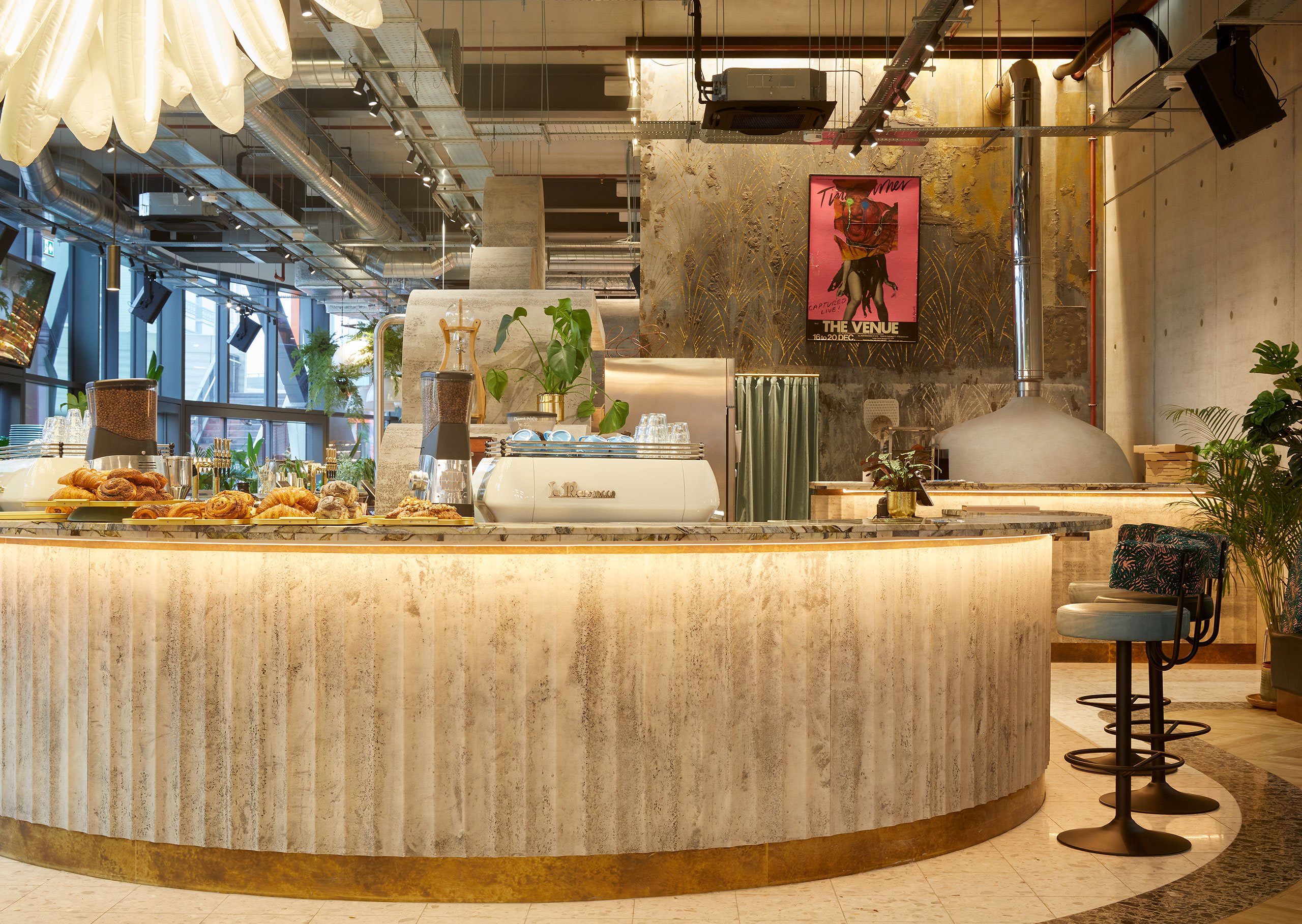
Photography by Katya De Grundwald.
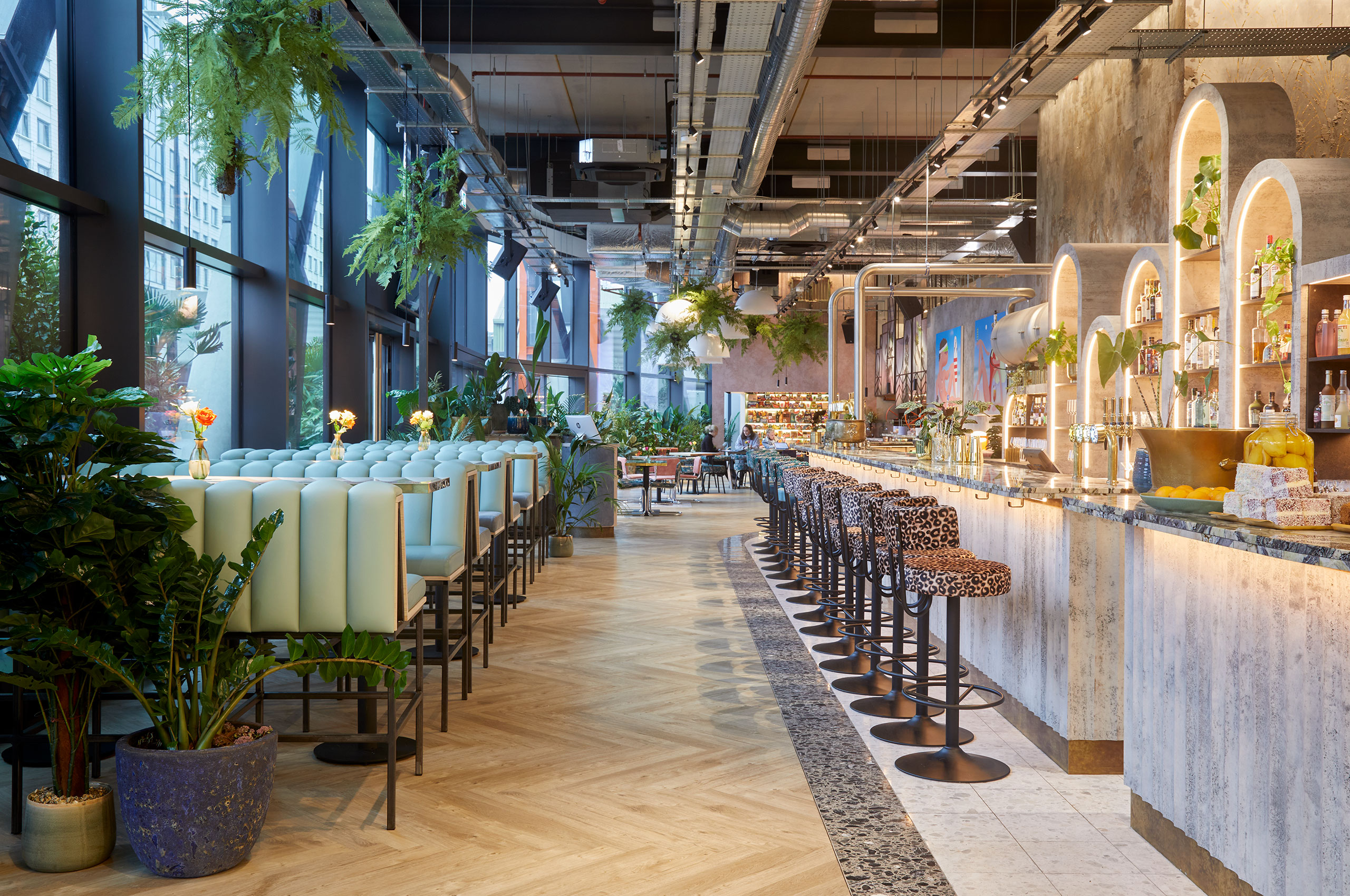
Photography by Katya De Grundwald.
